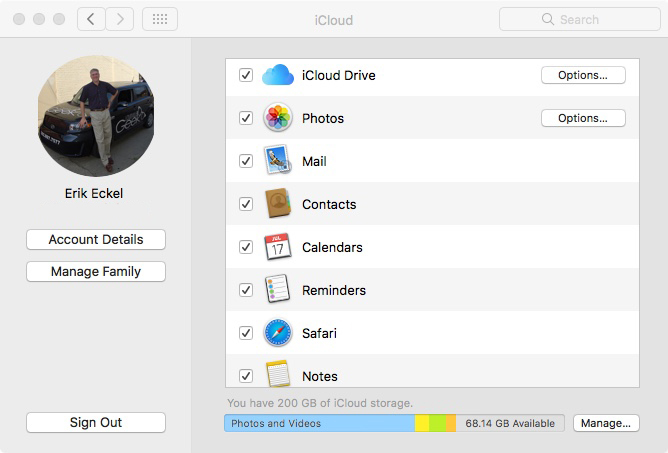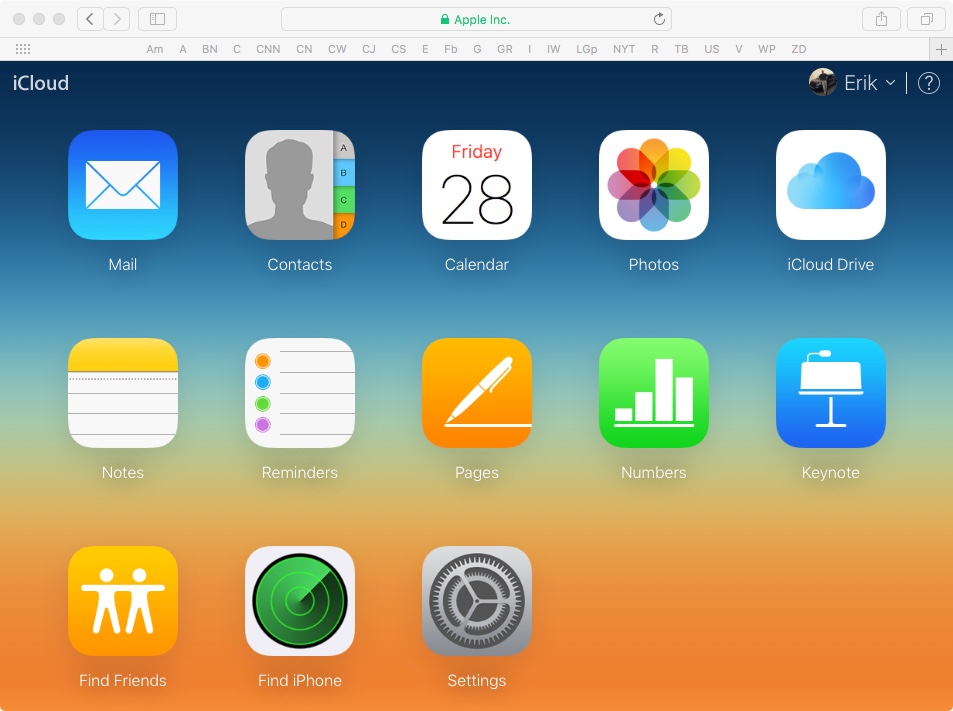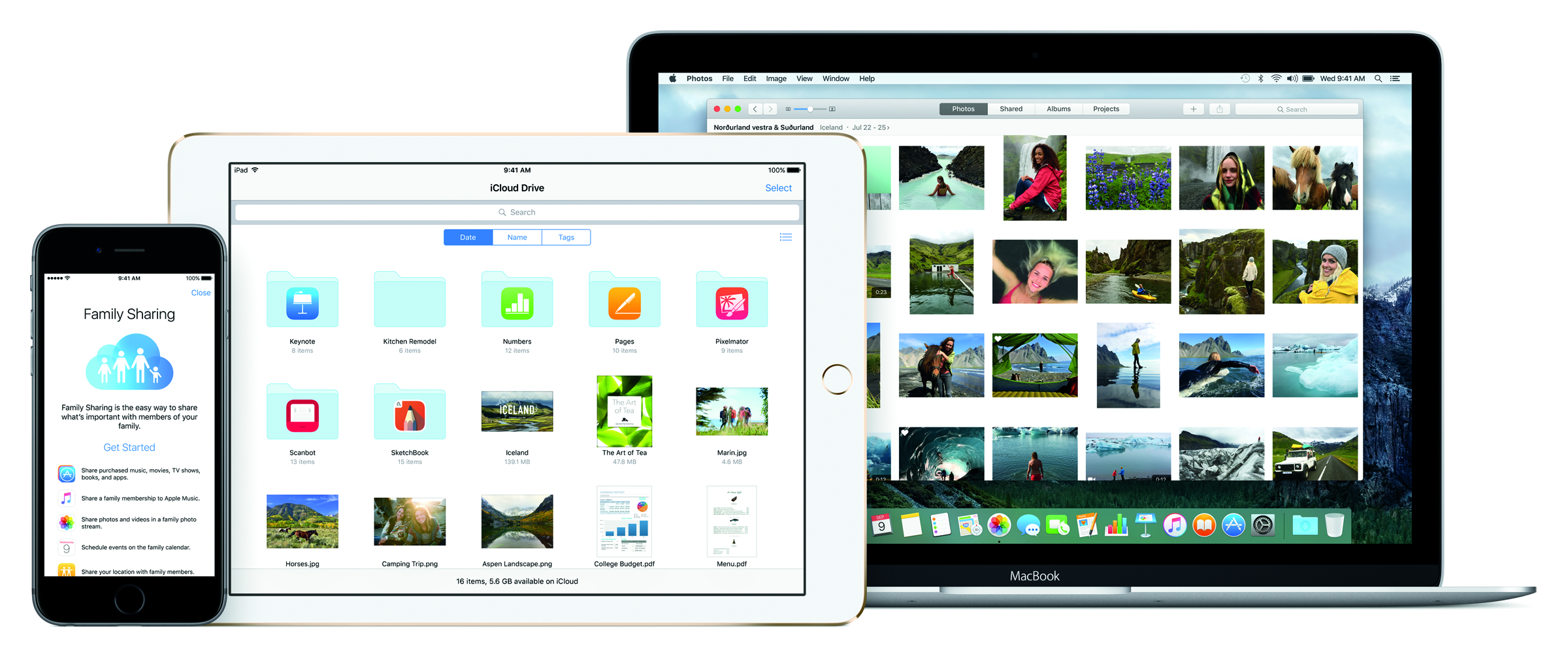Apple iCloud: A cheat sheet
Apple’s iCloud is a cloud file storage and services platform that provides users with secure ways to store and share files, find lost equipment and synchronize information across multiple devices.
Image: Apple Inc.
iCloud is Apple’s cloud file storage and services platform. The service permits users to leverage secure and highly reliable cloud computing features and capabilities to store and share a wide variety of files, locate lost equipment, and synchronize information across multiple devices.
SEE: Apple’s WWDC 2021 is June 7-11: How to watch and what developers can expect (TechRepublic)
Apple’s iCloud includes multiple features and components. The features included with iCloud are iCloud Drive, iCloud Storage Plans (additional file storage), iCloud Photo Library (cloud-based photo storage), Family Sharing (account and resource sharing), Safari and iCloud Keychain services and more.
We’ll periodically update this resource guide when new information is available about iCloud. This article is also available as a download, Cheat sheet: Apple iCloud.
SEE: Cloud Computing Policy (TechRepublic Premium)
The iCloud basics
- What is iCloud? The cloud service permits users to store and share files across multiple devices and platforms, including with other authorized users. Using iCloud, users can also locate lost equipment, share web surfing status with other devices, share passwords across multiple authorized devices and synchronize common personal information management components such as mail, Calendar, and Contacts. Users can leverage iCloud to back up iPhones, iPads and iPod touches.
- Why does iCloud matter? Cloud services play an increasingly important role fulfilling file sharing, collaboration and application needs. Apple’s iCloud service adds more features, including the ability to locate misplaced devices, calendar and contact synchronization, and cloud-based backup.
- Who does iCloud affect? Apple customers benefit most from iCloud. Mac, iPhone, iPad and iPod users can all leverage the cloud platform to add functionality and serviceability to such Apple devices. While iCloud components, including bookmark synchronization, web-based file access, creation, editing and sharing, and limited application access are all available to Windows users, Apple users—for whom iCloud integration is baked into devices’ operating systems—receive additional functionality.
- When was iCloud released? Apple iCloud entered service October 12, 2011 after being announced at the 2011 Apple Worldwide Developers Conference on June 6, 2011. The predecessor service MobileMe launched Jan. 5, 2000, and was re-launched as part of Apple’s .Mac effort on July 17, 2002. MobileMe was discontinued June 30, 2012.
- How can I get iCloud? An iCloud setup assistant is built into iPhones, iPads, iPod touches, and Macs. Apple offers directions for setting iCloud up on iOS devices, Macs and Windows machines. Apple includes 5GB of free storage with each iCloud account. In the U.S., 50GB additional storage costs 99 cents per month; 200GB costs $2.99 a month; and 2TB costs $9.99 a month. File storage capacity and pricing options vary by country.
SEE: All of TechRepublic’s cheat sheets and smart person’s guides
What is iCloud?
Apple’s iCloud service permits users to store, back up, access, view, edit and share a variety of files and information, including documents, spreadsheets, presentations, photos, videos, music, email, bookmarks and more across multiple devices and platforms, including with other authorized users. The devices across which iCloud users can share files include Macs, iPhones, iPads, iPod touches, and Windows PCs and tablets.

iCloud System Preferences enable customizing the cloud-computing operation.
Using iCloud, users can also locate lost equipment or locate friends. The Find iPhone feature—renamed Find My with macOS Catalina—permits iCloud users to track iPhones, iPads, Apple Watches and Macs. Users can sign into iCloud or use the Find My app to determine the location of a missing device for which the feature was previously enabled. The Find Friends app, which permits locating friends and family members, was also folded into the Find My app in 2019.
If a device is lost, iCloud users can remotely send the device a command placing it in Lost Mode, which helps protect the device’s data against unauthorized use and encourages whoever retrieves the device to call the owner. iCloud users can also implement a remote erase operation, if necessary to remove personal data from a lost device.
iCloud permits sharing web surfing status with other authorized devices. As a result, users can pick up (such as using a Mac) where they left off reading on a mobile device (such as an iPhone) or vice versa.
The platform enables sharing Keychain information—application and website passwords—across multiple authorized devices. The feature helps eliminate the need for a third-party password management program and makes it easier for Apple users to navigate websites and programs without having to commit multiple passwords for numerous sites to memory.
iCloud enables synchronizing email, Calendar, Contacts, Reminders, and Notes. When a compatible Mac or iOS device is configured to share corresponding data using iCloud, the cloud service automatically synchronizes the information across all the authorized devices. Then, contacts can be created on a Mac, viewed on an iPhone and edited on an iPad, for example.
SEE: More Apple-related news and tips (TechRepublic on Flipboard)
Beginning with macOS Catalina, Apple users can share iCloud Drive folders using a private link. Authorized users can subsequently access the corresponding files, make edits, add new files and review updated versions.
Users choosing to back up iPhones, iPads and iPods can leverage iCloud for these devices’ backups. In addition to backing up all photos and videos using iCloud, regardless of which device the image was initially captured on, iCloud permits users to back up iPhone, iPad and iPod touch configurations and data, which simplifies the process of configuring a new device, when the devices are connected to power and Wi-Fi. Users can choose to restore the entire old backup when deploying the new device. Alternatively, users can deploy a new device and then selectively recover files stored within iCloud Drive or components backed up to iCloud.
Competing cloud storage products include Backblaze, Box, Dropbox and Google Drive. Microsoft’s cloud version, which is intended primarily for Windows PCs but also works for Mac and iOS users, is OneDrive.
Additional resources:
Why does iCloud matter?
Cloud computing has significantly disrupted corporate and personal technology strategies.
Cloud file storage and synchronization services offer secure and reliable alternatives to backing up information, enabling personal information management (such as email operation and calendar sharing) synchronization, and sharing and distributing files with authorized users.
SEE: More cloud computing tips and news (TechRepublic on Flipboard)
Apple iCloud supports Power checklist: Managing and troubleshooting cloud storage (TechRepublic Premium)
Cloud subscriptions simplify license management for numerous applications, from creative suite tools to common office productivity applications. Cloud services also permit organizations to more easily receive updates, install application patches and deploy upgraded software editions.
Apple iCloud extends cloud advantages by enabling users to track, retrieve, better secure, and erase data and information on lost equipment. iCloud synchronizes email, appointments, contacts, notes and reminders across a user’s devices, thereby simplifying the daily task of accessing, editing and synchronizing critical and commonly used data. It’s impractical to manually attempt to back up, synchronize, track and otherwise manage so many devices and datasets.

The iCloud web-based interface provides web access to iCloud-synchronized Mail, Notes, Reminders, Contacts, Calendar and more. Windows users can also access Pages documents, Keynote presentations and Numbers spreadsheets stored within iCloud, as well as track lost equipment.
Additional resources:
Who does iCloud affect?
Apple users benefit most from iCloud features and services; iCloud integration is natively baked into iPod touch, iPhone, iPad and Mac devices’ operating systems. The result is seamless configuration, the ability to customize and set various iCloud options differently on a variety of independent devices and reliable operation.

iCloud Drive enables sharing a variety of files across various devices, including Macs, iPhones and iPads.
Image: Apple Inc.
Apple provides PC users with an iCloud application that permits sharing files using iCloud Drive, sharing and backing up photos and videos, synchronizing Mail, Contacts, Calendars, Tasks and Bookmarks, and a cross-platform web-based iCloud interface for sharing files and tracking lost equipment. However, Windows phones and mobile tablets don’t natively back up applications, settings, program configurations and other information the way iOS devices do with iCloud, and Windows devices cannot be restored using iCloud the way in which Apple devices are restored.
SEE: Power checklist: Managing and troubleshooting cloud storage (TechRepublic Premium)
Family Sharing permits sharing iCloud services with up to five family members. Using Family Sharing, authorized family members can share everything from music, books and apps to iCloud storage, as well as help family members find lost devices, monitor their screen time and more.
At Apple’s WWDC 2019 conference, the company announced Apple HomeKit Secure Video, which leverages iCloud storage. Unlike other video surveillance providers’ technologies, Apple’s HomeKit solution doesn’t send potentially sensitive user surveillance video to the cloud to be analyzed and potentially misused. Instead, Apple HomeKit Secure Video analyzes video in the user’s home, such as on an iPad or Apple TV, and then the video is encrypted and securely sent to iCloud, where users can store 10 days of free video clips without the space counting toward the user’s storage limit. Not even Apple can see the secure, encrypted footage within a user’s iCloud account.
SEE: WWDC 2020: The biggest takeaways (free PDF) (TechRepublic)

iCloud provides Apple users with the ability to back up photos and videos and share the files across Macs, iPads, and iPhones.
Image: Apple Inc.
Additional resources:
When was iCloud released?
Apple announced iCloud at the 2011 WWDC on June 6, 2011. iCloud entered service on Oct. 12, 2011.
The predecessor service MobileMe originally launched Jan. 5, 2000. MobileMe was re-launched as part of Apple’s .Mac branding effort on July 17, 2002. Apple discontinued MobileMe operation June 30, 2012.
How can I get iCloud?
Apple includes an iCloud setup assistant within its iPhones, iPads, iPod touches and Macs. The assistant simplifies deploying a new device or a reimaged system (such as occurs when replacing a failed hard drive).
Apple also publishes and maintains directions for setting iCloud up on iOS devices, Macs and Windows machines.
5GB of free storage are included, by default, with each iCloud account; additional storage is available.In the U.S., 50GB additional storage costs 99 cents per month; 200GB costs $2.99 a month; and 2TB costs $9.99 a month. File storage capacity and pricing options vary by country.
Also see
Editor’s note: This article has been updated to reflect the latest information.
For all the latest Technology News Click Here
For the latest news and updates, follow us on Google News.

